 Kalliope’s
Comments
(group member since Aug 28, 2018)
Kalliope’s
Comments
(group member since Aug 28, 2018)
Kalliope’s
comments
from the Ovid's Metamorphoses and Further Metamorphoses group.
Showing 141-160 of 610
 I have to explore more on the Music related to this Book, but there is this piece by Samuel Barber on Medea.
I have to explore more on the Music related to this Book, but there is this piece by Samuel Barber on Medea.https://www.youtube.com/watch?v=iq2aE...
 I still have more posts on this thread, and a few of these are on Medea.
I still have more posts on this thread, and a few of these are on Medea.I bought yesterday this lovely little book. It is the Spanish translation of an original German that is no longer in print and I cannot find in the second hand market.
Rubens y Monteverdi en Mantua
It discusses the arrival of Rubens, when very young (in his early 20s) to the Mantuan court, and when evaluating the impact that the Giulio Romano frescoes that were posted in this Group in relation to the Fall of the Giants, it mentions some drawings that Rubens carried out, exploring human emotion.

In the Getty collection.
Shows Medea just after the killing of her children, one of them still has the knife in his chest, and look at the study of the dragged dead body of the other one.
This episode within Medea is not really Ovidian. I think I said already that Ovid's presentation of this myth has surprised me because he just made a very passing comment on what I think is the most famous episode of her complicated life.
 Jim wrote: "I've just now read The Argonautikabecause I had been less than satisfied with Ovid's telling of the story of Jason, Medeia and the quest for the Golden Fleece, one of the very oldest..."
Jim wrote: "I've just now read The Argonautikabecause I had been less than satisfied with Ovid's telling of the story of Jason, Medeia and the quest for the Golden Fleece, one of the very oldest..."Thank you, Jim. Excellent post, for the information it gives us and also for your candid appraisal.
 Roman Clodia wrote: "Ah, I've just found Crowther's 'Cephalus et Procris': he was a student at Oxford at the time. There's the Latin and English translation available here if anyone is interested: http://www.philologic..."
Roman Clodia wrote: "Ah, I've just found Crowther's 'Cephalus et Procris': he was a student at Oxford at the time. There's the Latin and English translation available here if anyone is interested: http://www.philologic..."Thank you for this, RC... I will explore it later on.
But if you find the 15C to which the National Gallery alludes, please let us know.
 Roman Clodia wrote: "Hello, sorry I've been a bit quiet recently...
Roman Clodia wrote: "Hello, sorry I've been a bit quiet recently...So, a couple of interesting narrative moments in the Cephalus and Procris story:
l.681: 'Clytus or Butes answered' - as if the Ovidian poet can't c..."
RC, sorry, as you posted while I was posting the string of comments on the paintings and the music, I did not see your until now.
Excellent point on the ambiguity used by the Narrator with the 'Clytus or Butes answered'. Ovid certainly makes his readers feel the unreliability and the complexities in the narration of stories.
On the Aurora... I was struck that one of the music pieces was devoted to Cephalus and Aurora instead of Procris.
 Reading about Benda, I find he had a 'Medea'
Reading about Benda, I find he had a 'Medea'https://www.youtube.com/watch?v=GgW4w...
This is lovely. I may get a recording.
Also in German, and it is very clearly spoken in the recording in the above link.
It seems Mozart valued this piece.
 And another find..
And another find..By the Czech Georg Benda (1722-1795)
A Cantata - Cephalus and Aurora (not Procris).
https://www.youtube.com/watch?v=2sosV...
In German, for Peter.
In Amazon they have another edition using a Rubens sketch for the art cover.
 Vaughan Williams composed Four Last Songs in the 1950s. One of them is called Procris, and I find he was inspiring himself in the painting by Piero di Cosimo that I posted in #70 above.
Vaughan Williams composed Four Last Songs in the 1950s. One of them is called Procris, and I find he was inspiring himself in the painting by Piero di Cosimo that I posted in #70 above. Here is a recording.. For Mezzo.
https://www.youtube.com/watch?v=fkwZ5...
 There is also a cantata by one of Bach's sons, Johann Christian.
There is also a cantata by one of Bach's sons, Johann Christian.I found the score.. will see if I can find a recording.
https://www.loc.gov/notated-music/?fa...
 I found another opera, or rather a ballet héroique, by the French André Grétry. It was performed in Versailles in 1773.
I found another opera, or rather a ballet héroique, by the French André Grétry. It was performed in Versailles in 1773.Here is a complete recording of modern production but also in Versailles.
https://www.youtube.com/watch?v=UYHZl...
In orchestra form, though. No ballet.
 Roman Clodia wrote: "Scylla and Minos
Roman Clodia wrote: "Scylla and MinosWe're in 'heroic' territory in this book, it seems, where epic themes of the heroic and erotic seem to intertwine. Less emphasis on the gods or the 'love of the gods' typology.
..."
I have not started reading this yet - I still have parts to review in Book 7 for my Summary - but what you say on the 'Heroic' recalls something that my edition emphasised - the tripartite structure. We move from Gods, to Heroes, to Men.
 I may look for a few more paintings.
I may look for a few more paintings. But I also found the opera by the Italian Francesco Araja
I had not heard from it, but I read that it was the first opera written in the Russian language, From 1755. It seems some pages were lost and were reconstructed for a celebration of the anniversary of 280 years of Opera in Russia.
I would love to watch one. I enjoyed so much the La Calisto last Monday.
A few clips from various productions.
This one with a brief intro with English Subtitles.
https://www.youtube.com/watch?v=vM4rV...
And an am
https://www.youtube.com/watch?v=UDAMl...
 Joachim Wtewael. The Death of Procris. 1595-1600. St Louis Art Museum.
Joachim Wtewael. The Death of Procris. 1595-1600. St Louis Art Museum.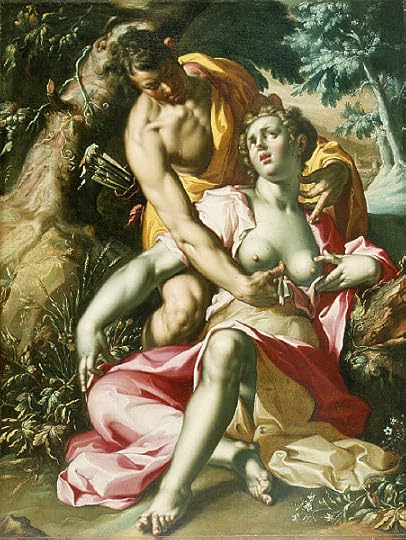
Abraham Janssens, 1610s. Hermitage.
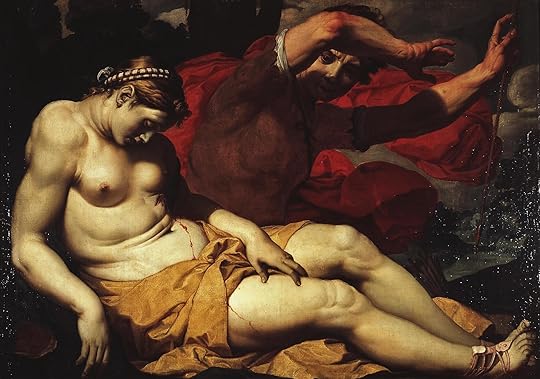
I was glad to find this one by Champaigne, since I just attended a lecture, in the Prado, on French 17C painting,
Philippe de Champaigne. 1630. Unknown.
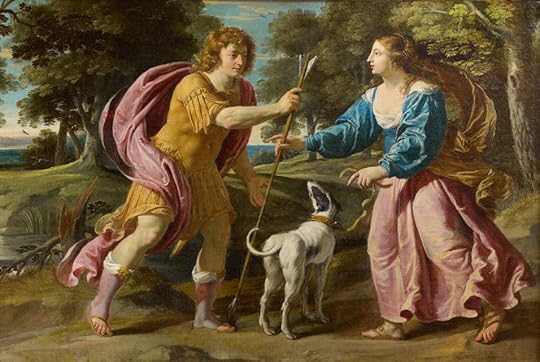
Not surprising, we find another sketch for the Torre de la Parada Hunting Lodge, by Rubens, but then executed by someone else from his workshop.
Rubens. Cephalus and Procris. 1636. Torre de la Parada. Prado.
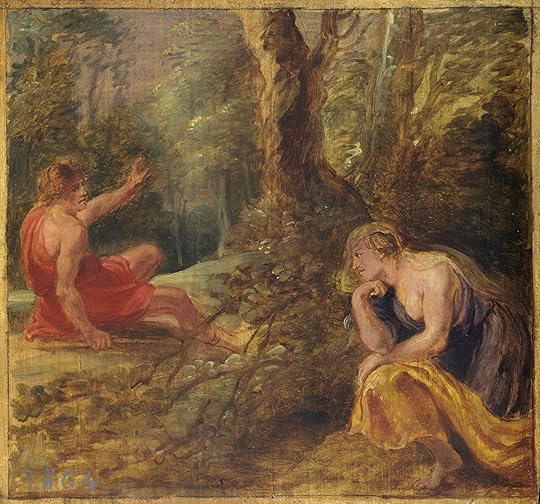
Peeter Symons. 1636. Torre de la Parada. Prado.
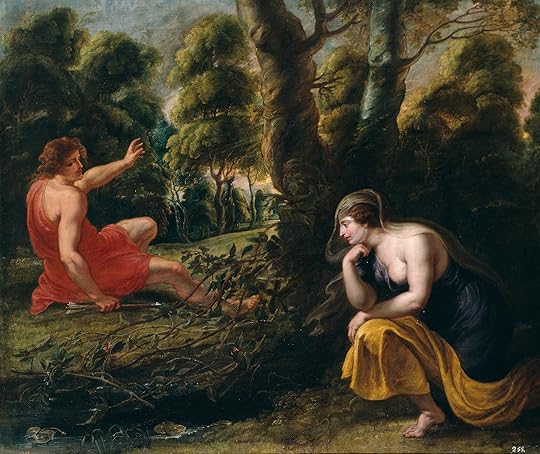
Fragonard. 1755. Musée des Beaux-Arts d’Angers.
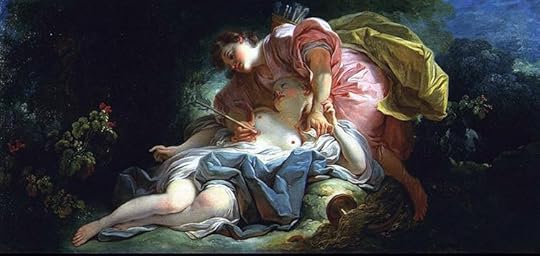
Alexander Macco. 1793. Unkonwn.

John Roddam Spencer Stanhope. Late 19C. Private collection.
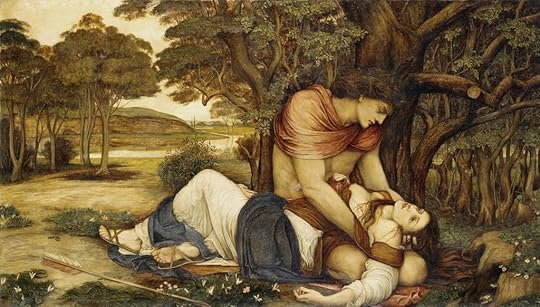
 Looking for paintings of this doomed couple I feel I am falling through a hole.. There are so many.. And we could not be surprised... Love and Death... such pathos and so eligible for the arts and their patrons...
Looking for paintings of this doomed couple I feel I am falling through a hole.. There are so many.. And we could not be surprised... Love and Death... such pathos and so eligible for the arts and their patrons...In this exploration we are doing a very interesting aspect is which of the Ovidian themes find an echo in the various arts, and then which of these themes perdure through time...
I will post a few now, but there are many more.
 Elena wrote: "The story is a good excuse to paint a favorite loyal puppy..."
Elena wrote: "The story is a good excuse to paint a favorite loyal puppy..."Yes, a tender dog... Not quite what comes to my mind with its name 'Hurricane'...
 Peter wrote: "I stumbled over this painting on the website of my local art museum
Peter wrote: "I stumbled over this painting on the website of my local art museumCephalus and Procris. Paolo Veronese. Circa 1580. Musée des beaux-arts de Strasbourg.
"
Peter, thank you for posting this Veronese.. You always find interesting paintings.
This one came to Madrid in 2017 for the following exhibition (an excellent one and I bought the catalogue).
https://www.museothyssen.org/en/expos...
It seems it formed a pair with one currently in the Prado.
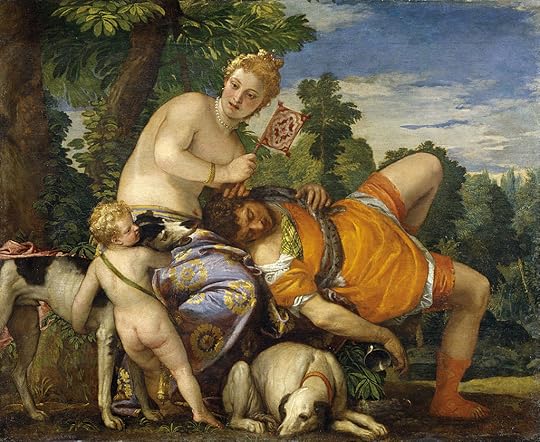
 My edition comments on the Plague as another 'metamorphosis' and also a parallel to the destructions we already saw in Book 1, with the Flood, followed by recreation, and in Book 3 with fire and Phaeton, followed by reconstruction.
My edition comments on the Plague as another 'metamorphosis' and also a parallel to the destructions we already saw in Book 1, with the Flood, followed by recreation, and in Book 3 with fire and Phaeton, followed by reconstruction.Another tale of death and resurrection.
And it draws a parallel with Virgil's 'Georgics' where the narrative of the plague (which affected only animals) is followed by a treatise on bees and their similarities in the way they organise themselves, with humans.
 Historygirl wrote: "Kalliope, thanks for posting paintings. The Sweerts seems to owe composition and incidents to Poussin. In each the affecting death of a mother with a child is highlighted. However, the Sweerts expr..."
Historygirl wrote: "Kalliope, thanks for posting paintings. The Sweerts seems to owe composition and incidents to Poussin. In each the affecting death of a mother with a child is highlighted. However, the Sweerts expr..."Very apt comments, HG... Even the Sweerts is not particularly Ovidian.
I have reread the Plague section and, apart from the role of June again as a trouble maker, I was struck by the almost 'blasphemous' treatment of the gods and their temples.. not until later does it seem that Jupiter has heard the prayers...
 I wasn't expecting many paintings on the Myrmidons, but I found a couple of engravings.
I wasn't expecting many paintings on the Myrmidons, but I found a couple of engravings.I have no data on this:
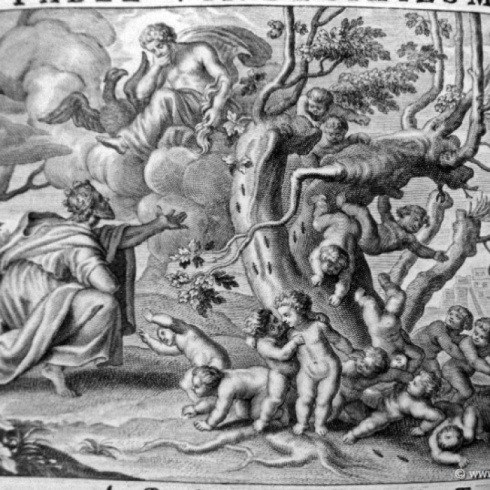
And this other one.
Virgil Solis. 1581.
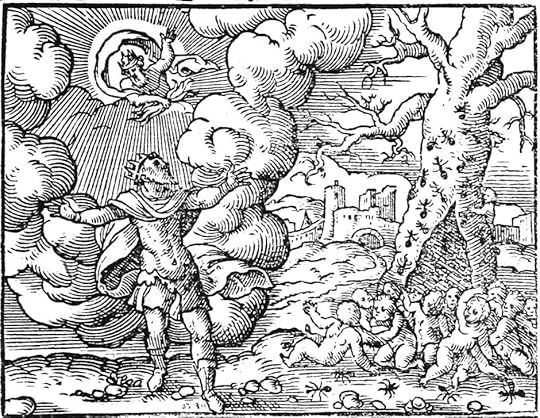
The name of Myrmidons comes from 'myrmex' - the Greek for ants.

